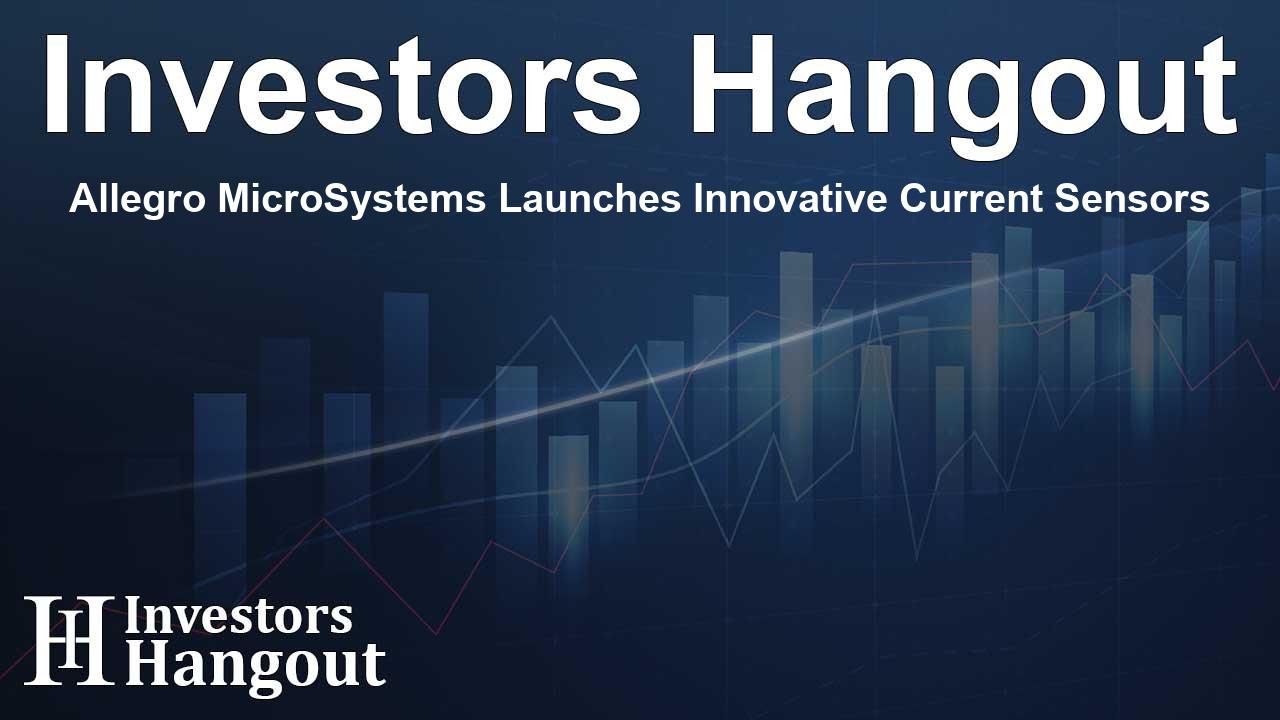Allegro MicroSystems Launches Innovative Current Sensors

Revolutionizing Current Sensing with Allegro MicroSystems
Allegro MicroSystems, a recognized leader in power and sensing solutions, has recently unveiled two remarkable current sensors incorporating their advanced XtremeSense™ TMR technology. These novel sensors are designed to facilitate high power density designs and generate substantial space and cost savings while enhancing energy efficiency.
Insights into the Latest Offerings
The newly launched CT455 and CT456 sensors are designed to improve current measurement accuracy, specifically for automotive powertrain systems and AI data centers. As many existing current sensor solutions on the market are bulky and inefficient, the innovative XtremeSense TMR technology addresses many challenges faced by engineers in the field.
Designing for Precision and Efficiency
Manufacturers frequently struggle with the limitations posed by current sensor modules. These solutions often lack the necessary precision and are prone to system failures, which can significantly complicate designs for engineers. Allegro’s current sensors provide a compact and reliable alternative, allowing engineers to maintain accuracy while simplifying their designs.
Key Features That Stand Out
The CT455 sensor supports two standardized field ranges, translating magnetic fields into linear analog output voltage, while the CT456 is optimized for a preprogrammed field range. Both sensors allow efficient current measurements on PCB or Busbar applications, significantly enhancing performance in the 80-200 A range. This innovative technology allows operations from 80 A and has capabilities extending above 800 A, all while ensuring optimal accuracy and efficiency.
Technical Advantages of TMR Sensors
One of the standout features of Allegro’s TMR sensors is their non-intrusive nature. Unlike traditional solutions, these sensors deliver impressive 1 MHz bandwidth and a 300 ns response time. This capability allows for improved power conversions while minimizing size constraints—making them ideal for industries striving for optimized compact solutions.
Benefits of the New Sensors
Allegro’s TMR sensors come with several notable advantages:
- Preset magnetic field range of ±6 mT that supports extensive current measurements.
- Low-noise performance that enhances measurement sensitivity, enabling higher accuracy.
- Optimized for swift voltage changes, addressing high dv/dt applications.
- Available in compact 8-pin SOIC and TSSOP package options, ideal for space-restrained designs.
These attributes position Allegro MicroSystems as a leading competitor in the current sensing market, particularly regarding high-speed power applications.
Commitment to Innovation
Rom Sathappan, Sr. Director of Global Marketing at Allegro MicroSystems, expressed enthusiasm about these latest offerings and highlighted how they signify a major advancement for the company since acquiring Crocus Technologies. The strategic enhancement in Allegro’s product range aligns with their mission to facilitate broader adoption of TMR technology among engineers seeking efficient, precise solutions for modern applications.
Joining the Future of Energy Efficiency
To facilitate ease of testing and implementation, Allegro MicroSystems also offers evaluation boards for the CT455 and CT456 sensors, further easing the integration of these solutions into various applications. These evaluation boards enable engineers to swiftly analyze performance and explore the technology benefits firsthand.
About Allegro MicroSystems
Allegro MicroSystems possesses over three decades of expertise in magnetic sensing and power ICs, driving advancements in automotive applications, clean energy, and industrial automation. The dedication to quality and innovation reinforces Allegro's status as a pioneer in high-performance solutions.
Frequently Asked Questions
What is the main advantage of Allegro’s new current sensors?
The new sensors utilize XtremeSense TMR technology, offering enhanced accuracy, compact design, and lower power consumption compared to traditional sensors.
What applications do the CT455 and CT456 sensors target?
These sensors are particularly suited for AI data centers and automotive powertrain systems where precise current measurements are essential.
How do TMR sensors improve measurement sensitivity?
TMR sensors deliver low-noise performance, which enhances measurement sensitivity and helps achieve higher accuracy in current sensing.
What are the efficiency features of Allegro’s sensors?
The sensors offer a 1 MHz bandwidth and a 300 ns response time, which facilitate rapid power conversions with minimal footprint.
Where can I learn more about Allegro’s current sensors?
For further details on the CT455 and CT456 sensors, you can visit their official website for specifications and sampling options.
About Investors Hangout
Investors Hangout is a leading online stock forum for financial discussion and learning, offering a wide range of free tools and resources. It draws in traders of all levels, who exchange market knowledge, investigate trading tactics, and keep an eye on industry developments in real time. Featuring financial articles, stock message boards, quotes, charts, company profiles, and live news updates. Through cooperative learning and a wealth of informational resources, it helps users from novices creating their first portfolios to experts honing their techniques. Join Investors Hangout today: https://investorshangout.com/
Disclaimer: The content of this article is solely for general informational purposes only; it does not represent legal, financial, or investment advice. Investors Hangout does not offer financial advice; the author is not a licensed financial advisor. Consult a qualified advisor before making any financial or investment decisions based on this article. The author's interpretation of publicly available data shapes the opinions presented here; as a result, they should not be taken as advice to purchase, sell, or hold any securities mentioned or any other investments. The author does not guarantee the accuracy, completeness, or timeliness of any material, providing it "as is." Information and market conditions may change; past performance is not indicative of future outcomes. If any of the material offered here is inaccurate, please contact us for corrections.